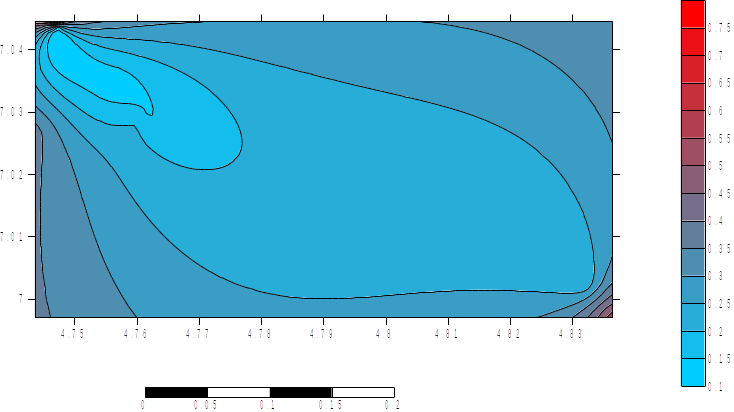Analysis of Indoor Radon Level and its Health Risks Parameters in Three Selected Towns in Port Harcourt, Rivers State, Nigeria
Keywords:
indoor radon, annual absorbed dose, annual effective dose, excess life cancer riskAbstract
Analysis of indoor radon level and its health risk parameters has been carried out in Borikiri (BT), Diobu (DR), and Rebisi (RB) towns in Port Harcourt, Rivers State, Nigeria. A pocket sized Corentium Arthings digital radon detector meter was used to record the indoor radon concentration levels. The geographical coordinates were recorded using a hand-held geographical positioning system (GPS) for the various sample points. A total of ten houses were measured for each town making a total of 30 sample points for the three communities. The results obtained show that for Borikiri town, the concentration level varied from 30.7100 - 19.9800 Bqm-3 with an average of 11.32 ± 2.59 Bqm-3 . The annual absorbed dose varied from 7.7478 - 1.1202 mSv/yr with a mean value of 2.59 ± 0.65 mSv/yr while the annual equivalent dose rate varied from 0.829 - 0.336 mSv/yr with an average of 0.69 ± 0.16 mSv/yr The excess life time cancer risk calculated for seventy years (70yrs) varied from 6.510 - 0.941 with an average of 2.45 ± 1.71. The results of the indoor concentration level for Diobu town ranged from 37.74 - 5.9200 Bqm ?3 with a mean value of 12.95 ± 2.91 Bqm-3 . The annual absorbed dose for the area ranged from 9.5214 - 1.1494 with an average of 3.26 ± 0.73 mSv/yr, the annual equivalent dose rate varied from 0.694-0.359 with a mean of 0.78±0.8, the excess life time cancer risk calculated for seventy years ranged from 8.000-1.725 with a mean of 2.91±0.61. The indoor concentration level for Rebisi town ranged from 12.9500?4.0700 Bqm-3 with an average of 8.55 ± 1.00, the annual absorbed dose ranged from 3.2671 - 1.0268 mSv/yr, the annual equivalent dose rate varied from 0.784 - 0.269 with an average of 0.52 ± 0.06, the excess life time cancer risk of 2.745 - 0.863 with an average of 1.82 ± 0.21. The results of the indoor concentration levels, the annual absorbed dose and the annual effective dose rate are all below the ICRP safe limit. However, the results of the excess life time cancer risk are all higher than the ICRP safe standard limit of 0.029 × 10-3 .

Published
How to Cite
Issue
Section
Copyright (c) 2021 Journal of the Nigerian Society of Physical Sciences

This work is licensed under a Creative Commons Attribution 4.0 International License.







